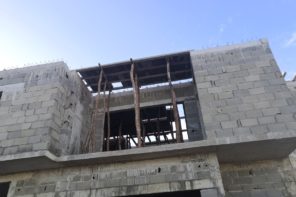Dorothy Noyes, Professor of English and Comparative Studies at the Ohio State University, responds to the questions Chiara Bortolotto has recently raised in her virtual roundtable on “‘Collaborative dilemmas’ in the age of uncertainty”.
I am joining in at Chiara’s suggestion, with some comparative thoughts from university-based collaborative research. Regina Bendix, a Swiss cultural anthropologist, Kilian Bizer, a policy economist, and I (a folklorist in US terms, that is, a European ethnologist) have just published Sustaining Interdisciplinary Collaboration: A Guide for the Academy (U of Illinois Press, 2017). The book is in part an ethnography of a six-year project, The Constitution of Cultural Property, funded by the German Research Foundation (DFG) and based at the U of Göttingen. In this case we were doing university-based research with no outside collaborators, but the Mode 2 complexities you all describe played a major role all the same. We are concerned with social research as social process: the constraints of “fast interdisciplinarity” in project format, the dynamics of research on hot problems that raise strong feelings inside as well as outside the working group, building social trust without losing the spirit of critical inquiry, the role of sociability in spurring interdisciplinary insight, and how to manage the project life cycle. In other words, although the critique of projectization is a running theme, we primarily discuss how to make the best of projects in practice.
In our case the researchers were not multipositional, but the problem was. We talk about the challenge of “slogan-concepts” such as cultural property, intangible cultural heritage, resilience, human rights, and so on: terms that propose attractive, inclusive frameworks for an open-ended range of local problems. Politicians conjure with slogan-concepts, communities latch on to them hopefully, policymakers seek operational definitions for them, and academics try to situate them in more stable regimes of knowledge — leading to the collaborative dilemmas you’ve all described.
What we found was that the research group became a microcosm of the societal tensions around the problem–not just a contact zone but a hot zone–because (as Billaud and others of you have pointed out), the academy is really not a world apart. Most of our participants came from consulting disciplines: policy economics, agricultural economics, international law, etc.: they were familiar with the various institutional worlds of local government, IGOs, etc. and had a practical rather than a theorized understanding of how to mediate between academic and institutional framings. They also tended to have a tolerant sense of the possible, knowing the frailties and also the virtues of their habitual interlocutors outside the academy. The anthropologists, of course, had often passionate commitments to specific communities and in some cases a vigorous generalized activist stance. Socialized into intensive ethical reflexivity, they raised questions of power dynamics, social justice, etc. to an extent that wearied other group members. This discourse divide led to some failures of intellectual recognition, where actors were actually in agreement but were describing the same problem at different scales or from different stances. Or tacit commitments and understandings were not trusted by those accustomed to spelling things out.
We observed a dangerous dynamic evolving in which the ethnographers narrated and postured, and those in the positivist and normative fields started zoning out.
Our efforts to address that dynamic are in the book’s recommendations, but in this context I want to note that many of the remedies came from the junior/precarious researchers. Being liminal themselves, they made the most of the liminal situation, the strange space apart of an interdisciplinary project. I should say that this German project offered a relatively stable situation compared to, for example, the course-by-course, semester-by-semester contracting of many adjunct faculty in the US, often without that exotic European luxury, health insurance. The junior researchers had a three-year contract with a decent probability of a three-year prolongation. (In fact, finding funding for PhD students and unemployed researchers was a major motivation for doing the project at all.) Thus the PhD students and postdocs had an interest in making a success of the project as well as of their own work. They also knew that they had at least three years in that setting among those colleagues. They were assigned to the project full-time, in contrast to any of their professors; they were also the ones doing the primary research. Turned into a cohort, they created the social rituals that integrated new arrivals and sustained us through the doldrums of the latter stages; they also wrestled seriously with the challenge of thinking across disciplines.
The stress of becoming interdisciplinary while still learning their own disciplines was real. Some buckled under it; some others focused on their own work and engaged as little as they could. Nonetheless, they spent a lot of hours listening to one another, both formally and casually. At a minimum, they learned how to explain themselves and their work to outside audiences in a way that is uncommon in the academy and that will serve them as they look for later jobs. They organized reading groups and background sessions explaining disciplinary histories and involvements, even arranging a debate; they identified points of contact between fields; they sought out one another’s expertise; in several cases they ended up co-authoring interdisciplinary work either with their contemporaries or with a professor from another field. Observing their seniors with detachment, and having less at stake in reputation and resources, they identified central questions invisible to the tenured faculty. In fact it was a postdoc who quietly put together the framework for the grant renewal during a meeting, while the professors squabbled and floundered. Another focus of our recommendations had to do with creating more opportunities for the junior researchers to take the intellectual lead in the project while protecting their vulnerabilities: their need to produce work of their own in their disciplines, the possibility of exploitation or neglect by the field advisor, and so on.
Writing from the comfortable berths to which our own Wanderjahre eventually led, and thinking of the project as set apart from the primary institutional commitments that continued to dominate our own lives, we tended to think in terms of liminality rather than precarity: the project as a rite of passage for the junior researchers before they entered some new more permanent arrangement. Happily that has been borne out in some instances of our cultural property project, but not all, and it’s a clear limitation of our thinking. The book points out that interdisciplinarity means nothing without disciplines, which the disruptive university of the moment is increasingly unwilling to sustain; that forced marriages are not conducive to harmonious unions; and that when all research runs after the fundable slogan of the day, the results are unlikely to have much staying power. We have no illusions that our plea for slow interdisciplinarity will prevail. Still, it’s inspiring to read your accounts here. Surely your presences are seeding reflection in the institutions with which you collaborate–indeed I know that the consultations over ICH are having useful effects in many places–and we all know that the academy is working to catch up institutionally with the kind of work you have been doing individually: you are the vanguard of the “alt-ac” future that is the Next New Thing, and that might be worth a roundtable of its own. I hope that some of those slow dialogues will produce speedier benefits by way of job security and recognition for the genuine contributions they make.







